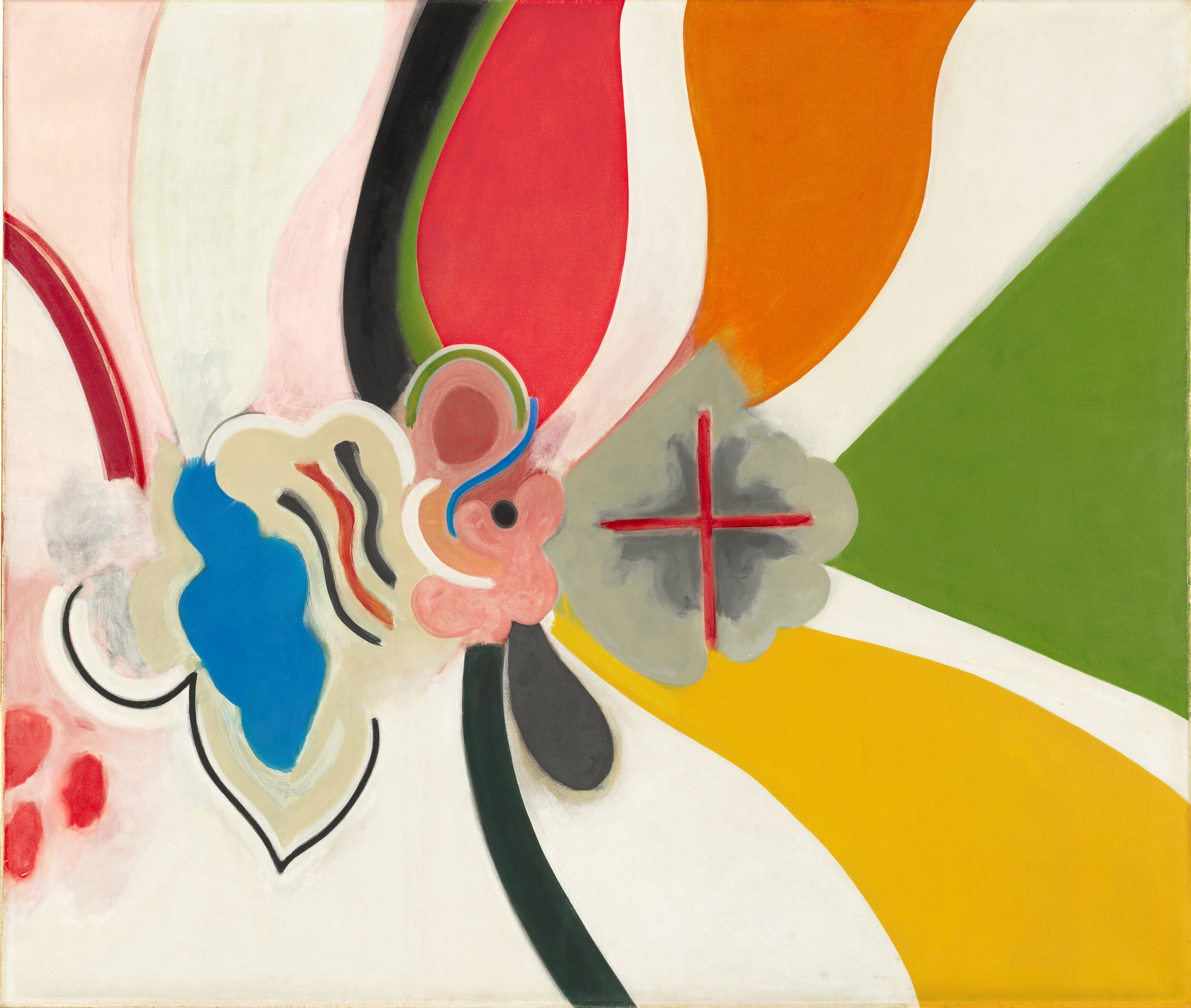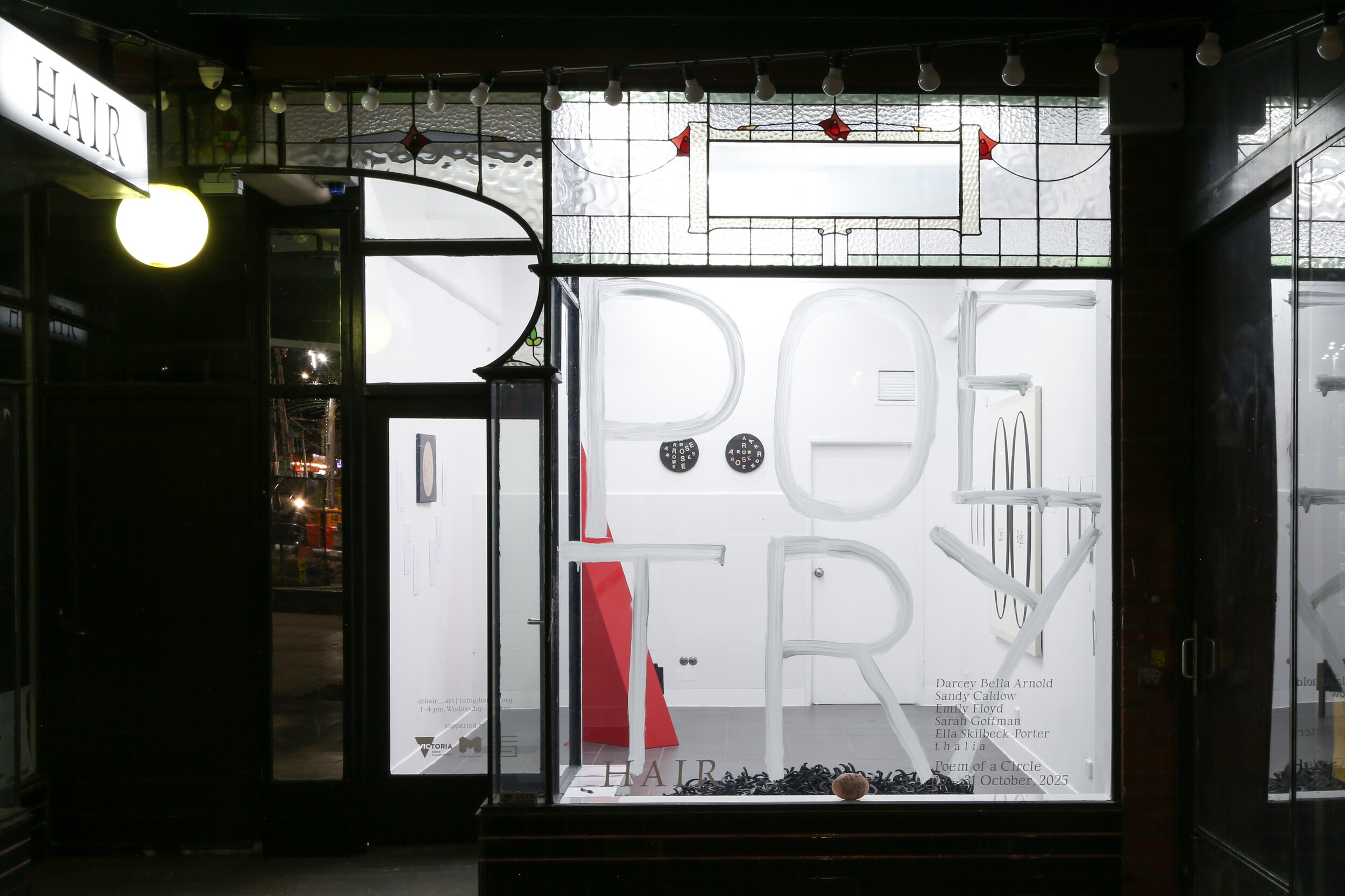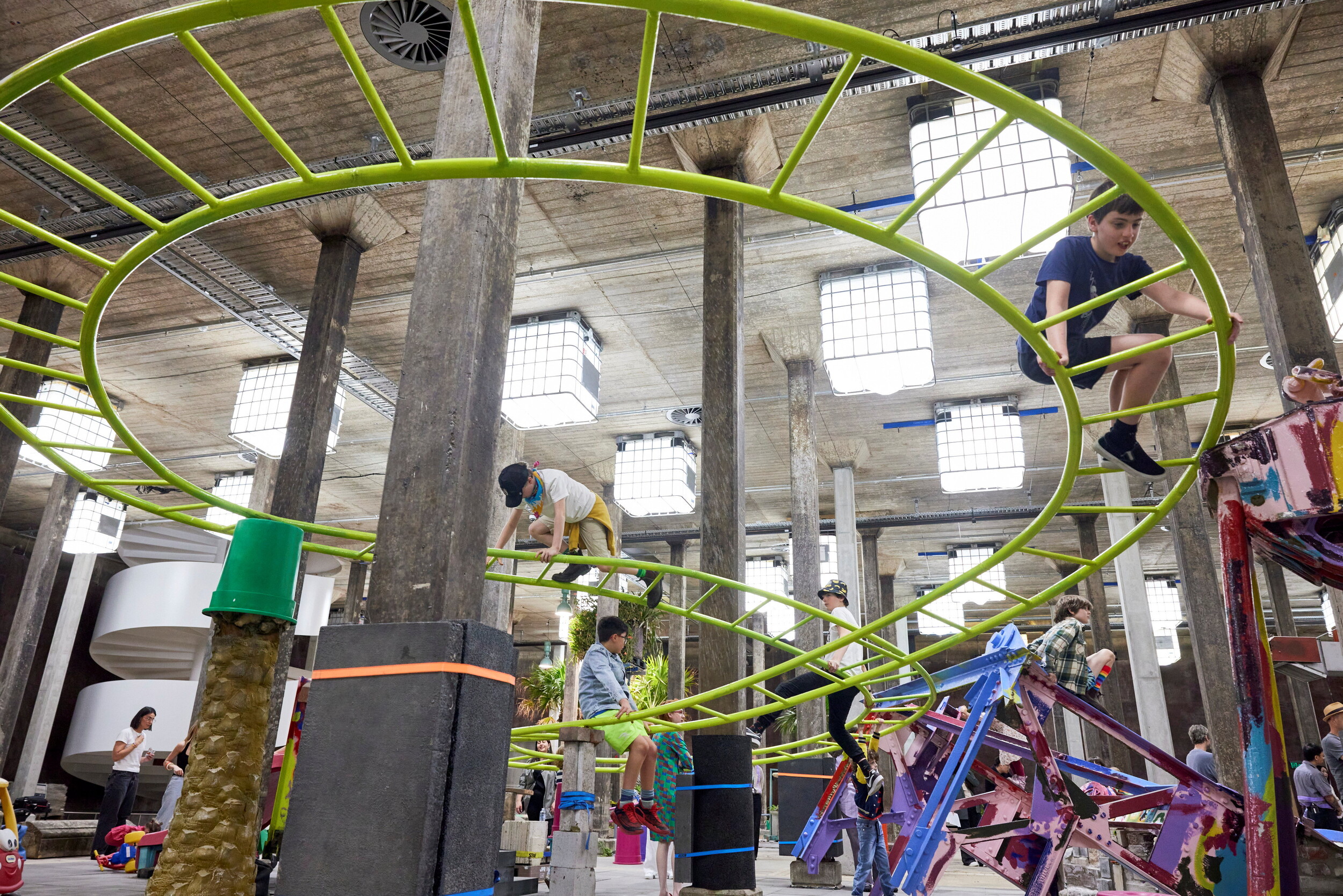Amelia Winata at Spring1883
Amelia Winata
On Wednesday morning, I begrudgingly took two trams (one of which, the 57, is dubbed Melbourne’s most dangerous) to Bridge Road, Richmond, where I began my slapdash tour of the Spring1883 “satellite” exhibitions. My first destination was LON, the quiet success story of Melbourne’s commercial-gallery community. Run by fresh-faced, professional-BMX-rider-slash-artist-turned-gallerist Adam Stone, LON has recently relocated from Collingwood (LON’s old Easey Street site is now occupied by FUTURES) to this slickly renovated space. An adorable set-up of Pellegrino and champagne greeted VIP guests upon arrival. Stone’s mother Meredith acted as host, offering up cute banter while Adam quickly ate down a snack. Despite it being only midday, ArtOpenings@Melbourne founder and consummate art enthusiast Charles Lai gleefully popped a bottle—this was Spring’s Wall Street Stock Exchange bell.

Amongst an even cross-section of LON stable artists—Simon Zoric, Dord Burrough, Grace Wood—weaver Tia Ansell’s dominance in the hang demonstrated LON’s strategic desire to push her as the star attraction of this year’s fair (not an uncommon tactic amongst gallerists). In addition to Ansell’s usual 33 cm works—priced at $1,800—were now larger versions of her tapestries, selling at $4,700 a pop. They were all beautiful. Despite the rumour that participants lost half of their $7,000 fee, while ending up staging their “booths” in their own galleries (the ultimate work from home insult), Stone nonetheless played the part of the cool and collected gallerist in his upgraded space. As I left, Charles Lai continued to sip on his champagne, charming anybody who would listen. I asked myself: so long as Charles Lai is having fun, does that mean the Melbourne art scene will be ok?

After brief pit stops at Niagara (running, again, into Lai) and Charles Nodrum, I returned to the CBD and climbed the stairs to Sarah Scout Presents—one of the Spring founding galleries. Spying a full ice bucket of Pommery (the event’s champagne sponsor), I was struck with a pang of melancholy for the Windsor piss ups that once were. Lisa Young, whose tapestries hung in SSP’s “salon”, made reference to various architectural features of the fair’s rightful home Windsor hotel (tapestry is so hot right now). Jake Preval’s photographs and sculptures featured prominently, suggesting that Preval is on SSP’s watchlist for future stable artists. While a generous smattering of work from current “classic” SSP stable artists Claire Lambe, Tony Garifalakis and Zilverster—confined to the backmost gallery—felt like a warm hug during the precarity of Spring and the impending doom of lockdown 6.0, at that time just a twinkle in Dan’s eye.
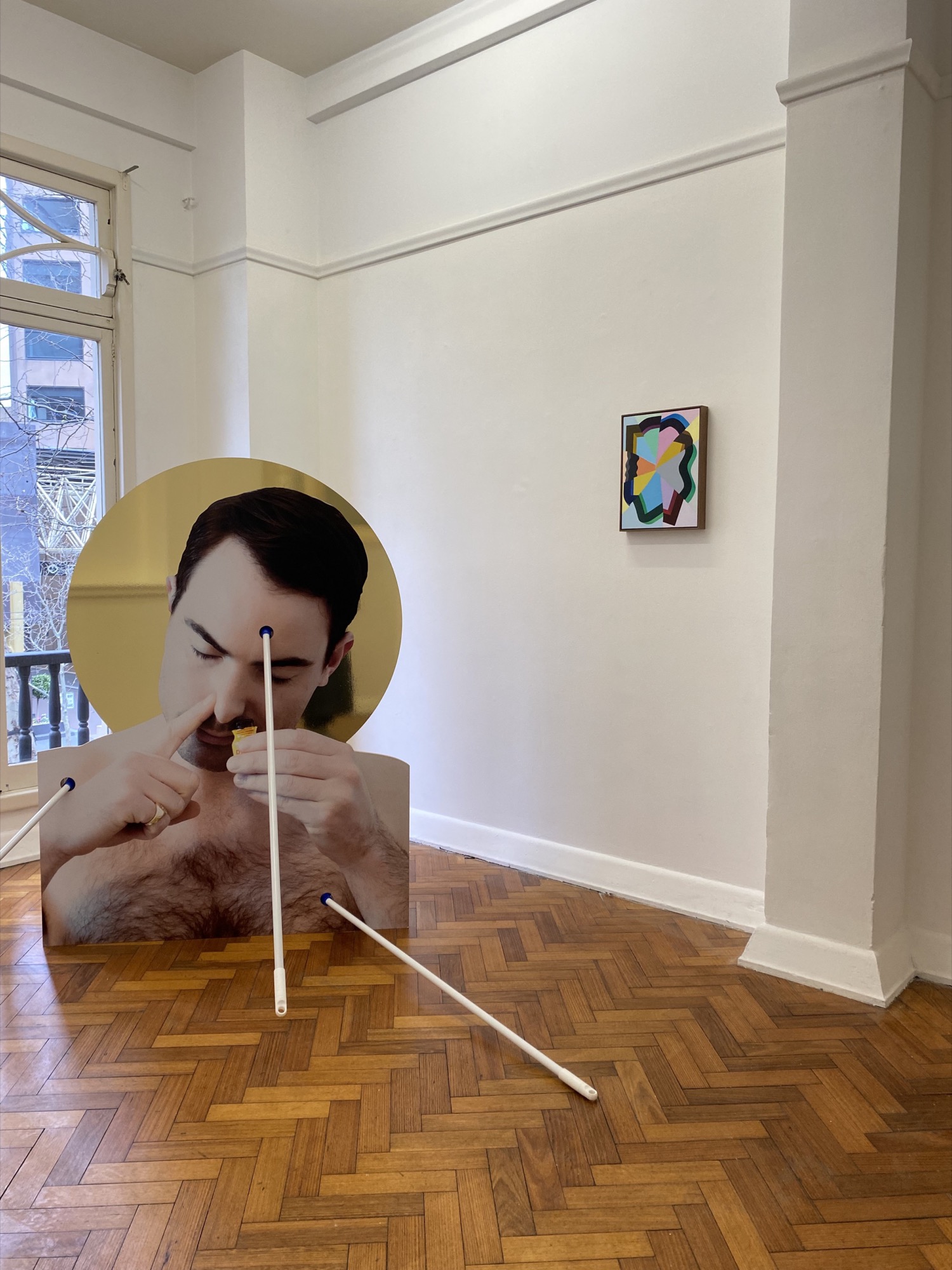
There was no champagne to be had at Sunday Salon, which took up temporary residence in Shifting Worlds, the go-to retailer for the Melbourne art community’s wardrobe of Pleats Please and their Baina towels. If, as I have suggested, familiarity was a crucial ingredient for this year’s Spring, then it was not Sunday Salon’s year to debut. Sunday Salon is an online platform that sells affordable art ranging from between $400 and $2,000 (although some pieces were priced higher at Spring). Artists shown at Spring included Julian Hocking, Pia Murphy and Jordy van der Nieuwendijk, all working in abstract painting or photography. Since it was only established in July 2020, it was probably banking on Spring to increase its following. Salon’s model is a highly commendable one— particularly in a culture where affordability is quickly dissipating. But there was a strange dynamic at play in this display at Shifting Worlds. The gallery’s presence in the two back rooms (once occupied by Suku and Baserange stores) was quite entrenched within the trappings of commerce. I felt I was in a store—a ridiculous thing to say, I know, given the entire fair is about making sales—but it left little room to contemplate the work in front of me.
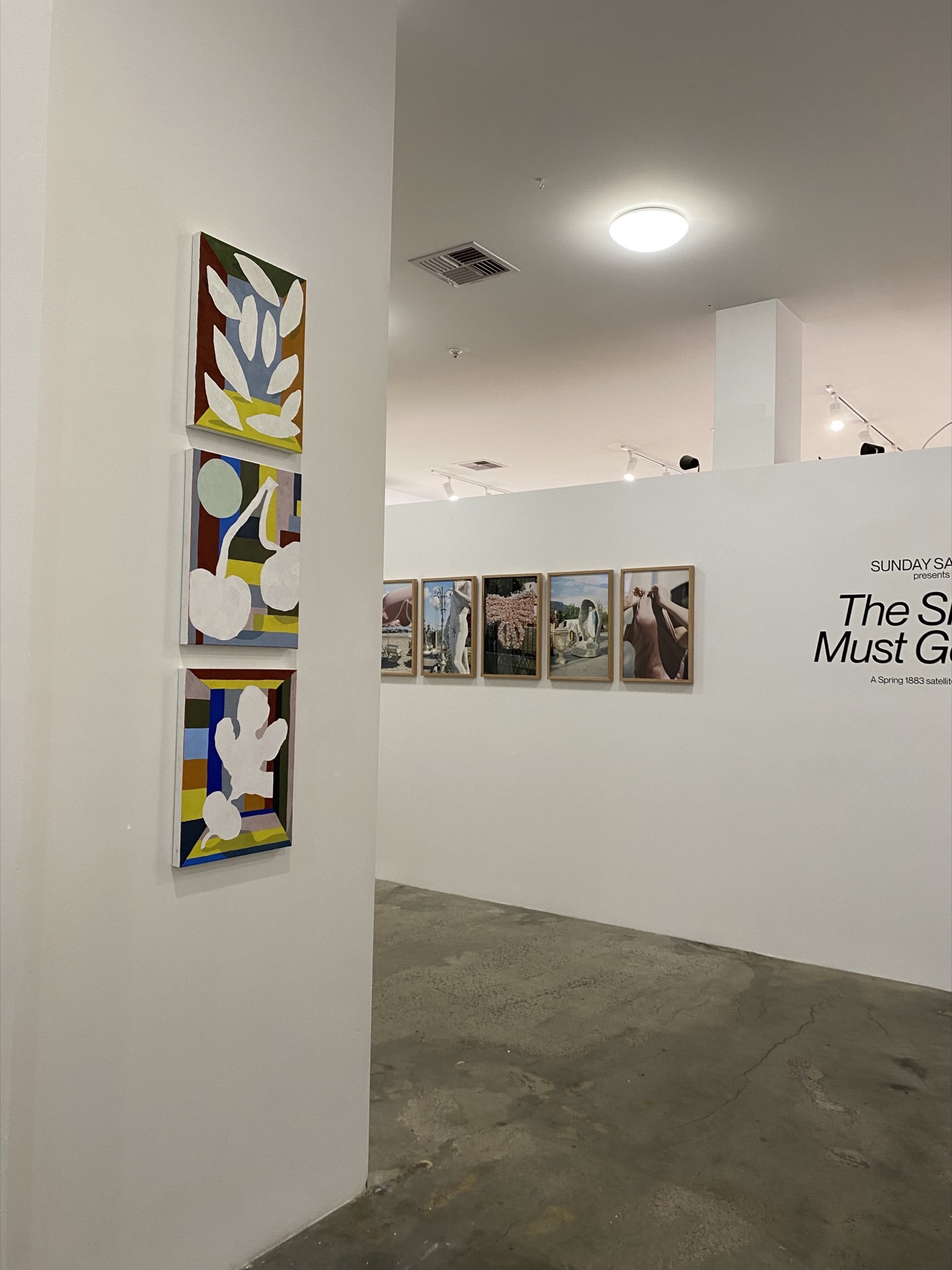
One of the more lovely qualities of Spring Fairs past is that there was an equalising logic at play amongst exhibitors. It is true, bigger galleries generally had larger rooms. But each exhibiting gallery—regardless of being young or established—worked with the same basic format of one Windsor room and the concomitant constraints of such an unconventional space. They were forced to think outside the box, often to humorous ends. This was humbling for the established galleries, while the opportunity for smaller galleries to exhibit alongside them was vital to increasing their standing within the community. Finishing my tour of Spring/Sprung 2021 at Sunday Salon felt emblematic of the fair’s outcome. The show went on, but it was greatly compromised. This was nobody’s fault per se. But I simply could not help feeling that it would have been nice to see a young establishment, such as Sunday Salon, flex their exhibition prowess at The Windsor, rather than simply reinforcing the dominant hierarchy already in place among the art-viewing public.
Amelia Winata is a Melbourne-based arts writer and PhD candidate in Art History at the University of Melbourne. For the record, Amelia Winata consumed no champagne during her Spring rounds.
